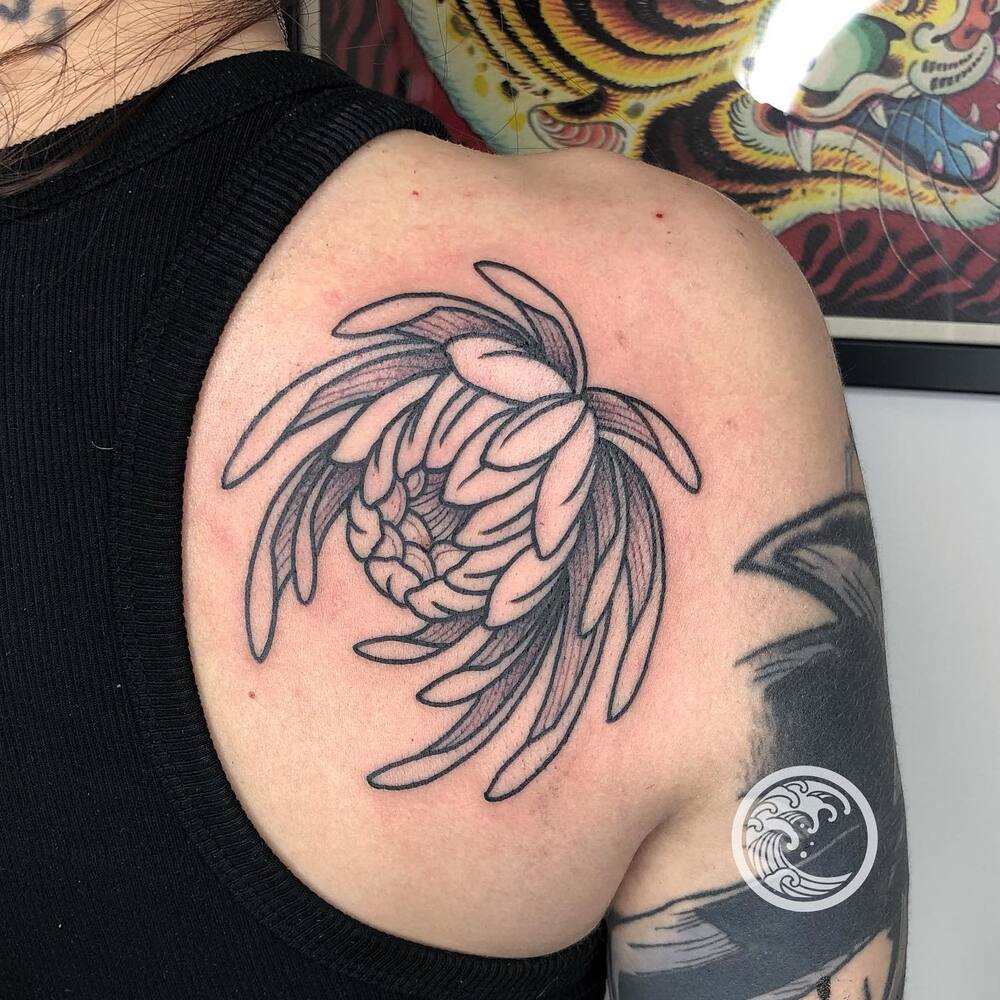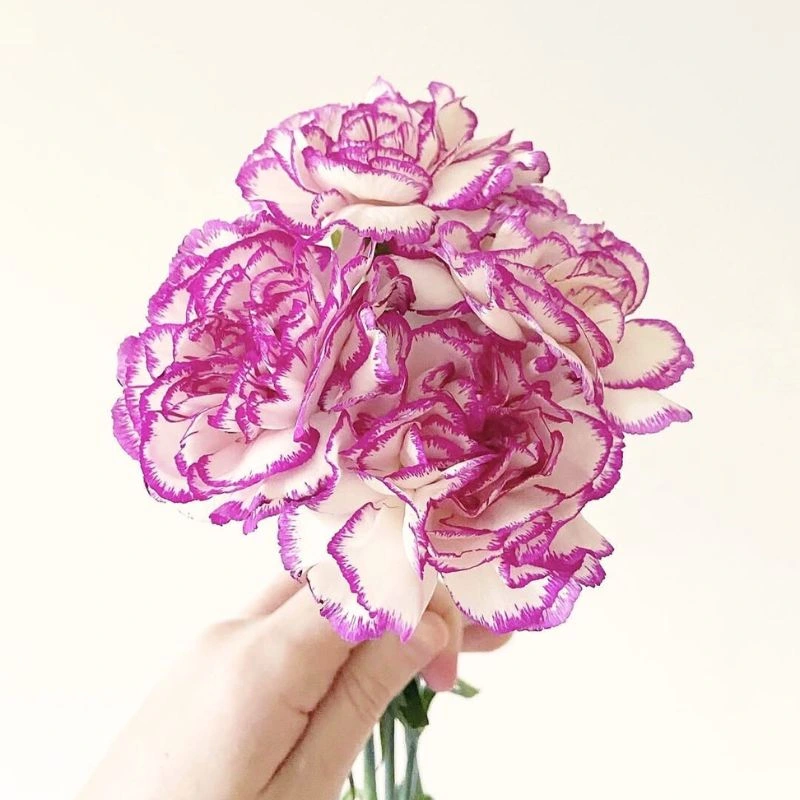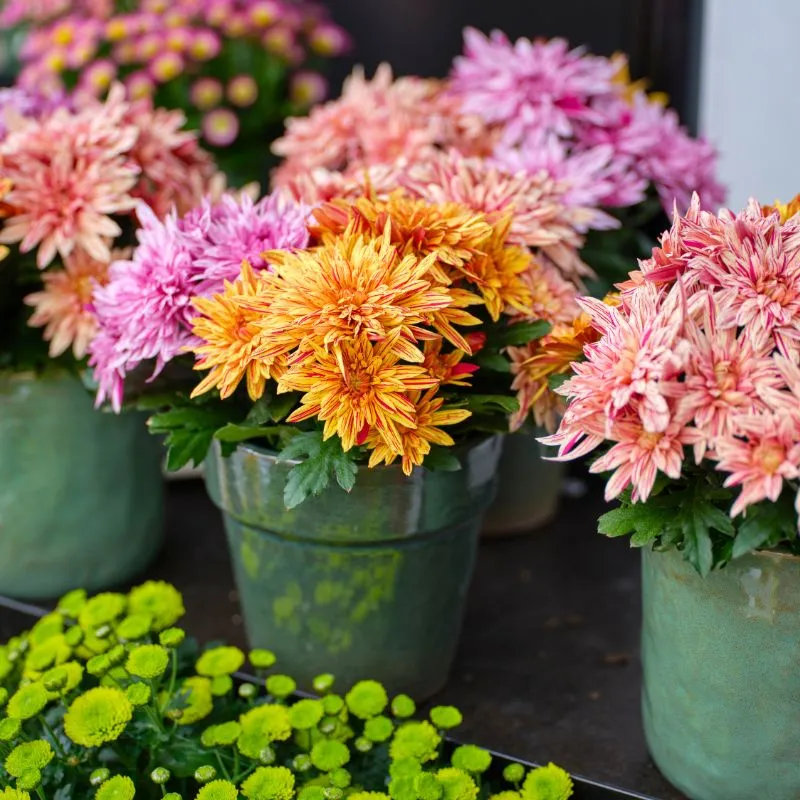November tips the year toward winter while spotlighting the Chrysanthemum as the primary birth flower. This November birth flower is prized for its colored and ruffled petals, thriving exactly when many gardens wind down. As the month's birth flower traditions evolved, the Chrysanthemum earned pride of place for its endurance, clarity of form, and long vase life.
For people born in November, birth flowers do more than decorate a room - they carry meaning. In various cultures, Chrysanthemums signal joy, good fortune, and respect, while some modern guides add peony varieties as a secondary flower, giving November babies two birth flowers for birthday celebrations and heartfelt messages.
The Radiance of Chrysanthemum - November Birth Flower
Among late-season flowers, Chrysanthemums (often called mums) lead with sturdy stems, clean forms, and many flowers in a spectrum of shades. As a November birth flower, they're easy to read at a glance: white for honesty, red mums for passion, yellow for cheer, purple Chrysanthemums for wellness wishes, and pink Chrysanthemums for kindness and gentle affection.
Botanically, the Chrysanthemum sits in Asteraceae alongside daisies and sunflowers. It likes full sun and tolerates dry spells once established; soil that can retain moisture keeps plants reliable through the fall season. Well-grown mums reward people born in November with vibrant colors when several flowers elsewhere fade.

The word 'Chrysanthemum' fuses the Greek for 'gold' (chrysos) and 'flower' (anthemon) - a nod to historic yellow selections. Today, green Chrysanthemums and many other hues appear alongside pink, purple, and classic yellow; in China, the flower is linked with good fortune and literary tradition.

Historical and Cultural Significance of Chrysanthemum
In China, cultivation stretches back millennia for both ornament and medicinal purposes; Chrysanthemum tea and remedies remain part of traditional Chinese medicine, reflecting recorded medicinal properties. As birth month flowers go, few have such a rich history in paintings, poems, and gardens.
In Japan, the Chrysanthemum is bound to the Imperial family: it appears on passports and lends its name to the Chrysanthemum Throne. Many references treat it as a national flower, and its use in state symbolism underlines associations with longevity and good fortune.

Three Popular Types of Chrysanthemums
Chrysanthemums come in numerous varieties, each exhibiting a unique charm. Among the many, three popular types of Chrysanthemums are particularly favored by florists and enthusiasts:
- Disbudded Chrysanthemums: Known for their dramatic appeal, disbudded Chrysanthemums are cultivated to produce one large, breathtaking flower per stem. This is achieved by removing the side buds during their growth, allowing the plant to direct all of its energy into creating a large, showy flower. These blooms are perfect for making a statement in bouquets or as a single-stem gift.
- Spray Chrysanthemums: Unlike their disbudded counterparts, spray Chrysanthemums are allowed to keep multiple buds per stem, resulting in a spray of many flowers that add a lush fullness to floral arrangements. These are particularly popular in fall decor, bringing warmth and depth.
- Santini Chrysanthemums: Smaller yet delightful, santinis are compact spray Chrysanthemums, adored for their versatility. With multiple flowers per stem, santinis add rich texture and volume to any arrangement, making them ideal for professional office decor or for enhancing home interiors during early summer and late spring.

What are the Two Birth Flowers for November?
Most authorities list Chrysanthemum as the November birth flower, but several contemporary guides also include peony as a second option. In those lists, Chrysanthemum is the primary birth flower, and peony is the secondary flower - associated with happy marriage, prosperity, and good fortune. Red peonies are especially popular when in season. Natural peony bloom times are late spring to early summer; off-season stems are typically imported or cold-stored.
The Allure of November Birth Flower – Chrysanthemum
As temperatures fall, the November birth flower signifies endurance and friendship with vibrant colors that keep the garden lively. Chrysanthemum is more than a mere flower; it carries profound symbolic meanings across cultures, standing for friendship, optimism, and endurance. Unlike roses which might symbolize romance, Chrysanthemums have their unique ability to represent a variety of emotions and meanings, making them ideal for many occasions.

Color Symbolism of Chrysanthemums
The colors of Chrysanthemums each hold their own unique meanings, making them versatile for a range of occasions:
- Red Chrysanthemums: A declaration of love and passion, representing the deepest of emotions.
- White Chrysanthemums: Symbolize purity, loyalty, and genuine affection, often used to convey truthfulness and sincerity.
- Yellow Chrysanthemums: Historically seen as symbols of neglected love, they now represent cheerfulness and the brightness of the sun.
- Violet Chrysanthemums: Wishing wellness and strength, these flowers are often presented as a gesture of support and good health.

Each of these colors contributes to the rich narrative of the Chrysanthemum, offering a broad spectrum of meanings that can convey anything from love to encouragement.
Fun, Historical, and Interesting Facts About the November Birth Month Flower
The Chrysanthemum is a flower with a fascinating history, steeped in symbolism and diverse uses:
- A Drink of Health: The Chinese traditionally brewed Chrysanthemum tea from its petals, which is believed to have medicinal properties. They also consumed the boiled roots as remedies for headaches. Ancient Chinese folklore even touted this flower as a symbol of longevity and immortality.
- Royal Affection: The Imperial Seal of Japan features a Chrysanthemum, reflecting its esteemed status.
- The Chrysanthemum Throne: The Japanese monarchy is often called the Chrysanthemum Throne. It's also the national flower of Japan.
- Queen of Fall Flowers: Chrysanthemum, besides being popularly called 'mum,' is also known by another well-known title - the Queen of Fall Flowers.
- Pyrethrum Variety: One of the Chrysanthemum's varieties, the Pyrethrum, is used to make organic insect repellent.
- A Floral Marvel: Around forty wild species and thousands of varieties of Chrysanthemum are cultivated worldwide. Some cultivated Chrysanthemums can have more than 500 petals.
- Gardening Marvel: There's a technique called Chrysanthemum bonsai, where this plant is grown in bonsai style.
- In Australia, the Chrysanthemum is the flower of choice for Mother's Day due to its cultural connotation of love and care.
The Artistic Expression of November Birth Flower – Chrysanthemum Tattoos
The journey of inking one's skin has always been profound self-expression. With their rich symbolism and evocative forms, flowers have been among the top choices. In botanical body art, the Chrysanthemum holds a place of reverence. And when November rolls around, this flower inspires many body art enthusiasts.

Celebrating November Through Body Art
Chrysanthemums are increasingly popular in the world of body art, especially for those born in November. Their layered petals and intricate design offer a rich canvas for tattoo enthusiasts. Chrysanthemum tattoos are often chosen for their deep connection to life and resilience. They are seen decorating various parts of the body, from the back to the calves, and symbolize the beauty found in personal growth and the cyclical nature of existence.
Personalization and Meaning Behind Chrysanth Tattoos
Chrysanthemum tattoos offer wearers the opportunity to embody personal meaning through their designs. For example, golden color can represent hope and positivity, while red and pink tones can signify passion and affection.

Many individuals choose to include additional elements such as names, dates, or other flowers like roses to create a narrative unique to their experiences. The placement of the tattoo can also hold significance - over the heart, it could symbolize love, while on the arm, it might denote strength.
Embracing the Beauty of the November Flower in Everyday Life
Chrysanthemums are perfect for enhancing both personal and professional environments. Their vivid colors and varied forms make them a versatile option for decoration:
- For the Living Room: A simple vase of pink peonies or yellow Chrysanthemums can brighten up a space, adding a touch of warmth to any setting.
- Fr the Bedroom: Placing white chrysanthemums in small pots on bedside tables creates a calming atmosphere, contributes to a restful bedroom-like environment.
- For the Dining Area: Chrysanthemum-patterned tablecloths or coasters can enhance mealtime, providing a nostalgic touch of spring and the comforting presence of nature.
- For the Outdoor Patio: Chrysanthemum plants are ideal for outdoor areas, where they can thrive even in cooler temperatures, offering vibrant color well into winter.

Enhancing Professional Office Decor With the November Birth Month Flowers
While home environments can be readily transformed with flowers, professional spaces require a more measured approach. Yet, the versatile Chrysanthemum does not disappoint even here.
- Reception or Waiting Area: A neat Chrysanthemum arrangement can warmly welcome visitors or clients. Opt for a more neutral or white blossom to maintain a professional demeanor while introducing a touch of November's beauty.
- Conference Rooms: A subtle vase filled with Chrysanthemums can be placed on the conference table. This unassuming addition breaks the monotony and can be a conversation starter, making meetings more relaxed.
- Work Desks: Encourage employees or colleagues to have a small potted Chrysanthemum on their desks. Apart from the visual appeal, these plants can act as a stress buster, bringing a touch of nature close to the workspace.
- Hallways and Corridors: Larger pots or planters filled with Chrysanthemums can brighten up otherwise dull corridors. The rich hues can complement most professional settings without being too overpowering.

November Birth Flower Represents Resilience, Beauty, and Depth
The Chrysanthemum perfectly embodies the spirit of November, representing resilience, beauty, and the depth of human emotion. Its layered petals, rich colors, and cultural importance make it a flower of great significance - not only as a birth flower but also as a symbol that has been cherished throughout ancient times to today. It reminds us that even in the face of adversity, we can find beauty and strength, much like the Chrysanthemum flourishing in the cooler seasons.

Header image by Icon Selections, feature image by @bgm_duesseldorf.










